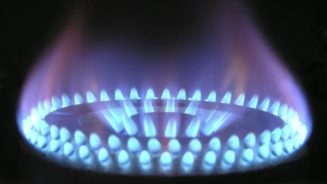To put this in perspective, the Commodities – Broad Basket Morningstar Category returned above 7% through the end of October 2016.
Even more dramatically, the Euromoney Global Gold index returned 80% during the same timeframe. Many commodities have recorded strong gains after reaching a decade low in January 2016, prompting a renewed interest in the sector.
Signs of recovery
The strong outperformance of commodity and resources equities has been driven by several factors.
Slightly reduced concerns around the Chinese economic outlook, diminishing expectations of US interest rate rises and encouraging signs on the supply and demand fronts have all contributed to a positive backdrop for the sector.
The Chinese government’s stimulus efforts at the start of the year have resulted in improved macroeconomic data and increases in property market prices, boosting many industrial metals and bulk commodities prices.
Iron ore has gained over 30% as Chinese steel demand increased in anticipation of the construction season. Even more remarkable, the price of coking coal has increased by over 130% so far this year.
A fall in production in a sector that has suffered from a supply glut for a number of years has also contributed to this upward move in commodities prices. The capex reduction efforts undertaken by producers in recent years have finally resulted in muted supply growth for many commodities.
Furthermore, the demand side of the equation is also encouraging, supported by fiscal spending, notably in China as part of the government’s five-year plan, but also from potential spending in developed markets.
Golden touch
It is little surprise that against this market backdrop many commodity-related funds have delivered material positive returns. Of the sub-sectors across the sector, gold has been the star performer this year.
The precious metal has soared from the levels seen in the past three years as investor demand for the ‘safe-haven’ asset has increased, driven by uncertainties around the global economy, political events, including the UK referendum on EU membership, and increased probability of US interest rates remaining unchanged as opposed to the four rate hikes priced in by the market at the start of 2016.
The impact of these events was seen on the day of the UK referendum result, with the gold price increasing by 5% and trading above $1,300/oz. A consequence of the popularity of gold has been massive inflows into exchanged-traded funds during the first half of this year.
Most dedicated gold fund managers are bullish on the long-term outlook for the precious metal, given the ongoing concerns around global economic growth, political unrest and the uncertainty around the outlook of the UK after the EU referendum.
This positive view has been reinforced by the gold companies’ financial strength. Measures taken by the gold industry since the 2012-13 period, notably better capital allocation and operational efficiency, have led to expanding free cashflow and consequently helped to rebuild investors’ trust.
Furthermore, the surge in demand for gold equities as a safe-haven and diversifier can also be explained by the low or negative yields on government bonds, to which investors have traditionally turned for their safe-haven qualities. Gold fund managers also highlighted that the demand from Asia and a decline in production should support the investment case for gold.




